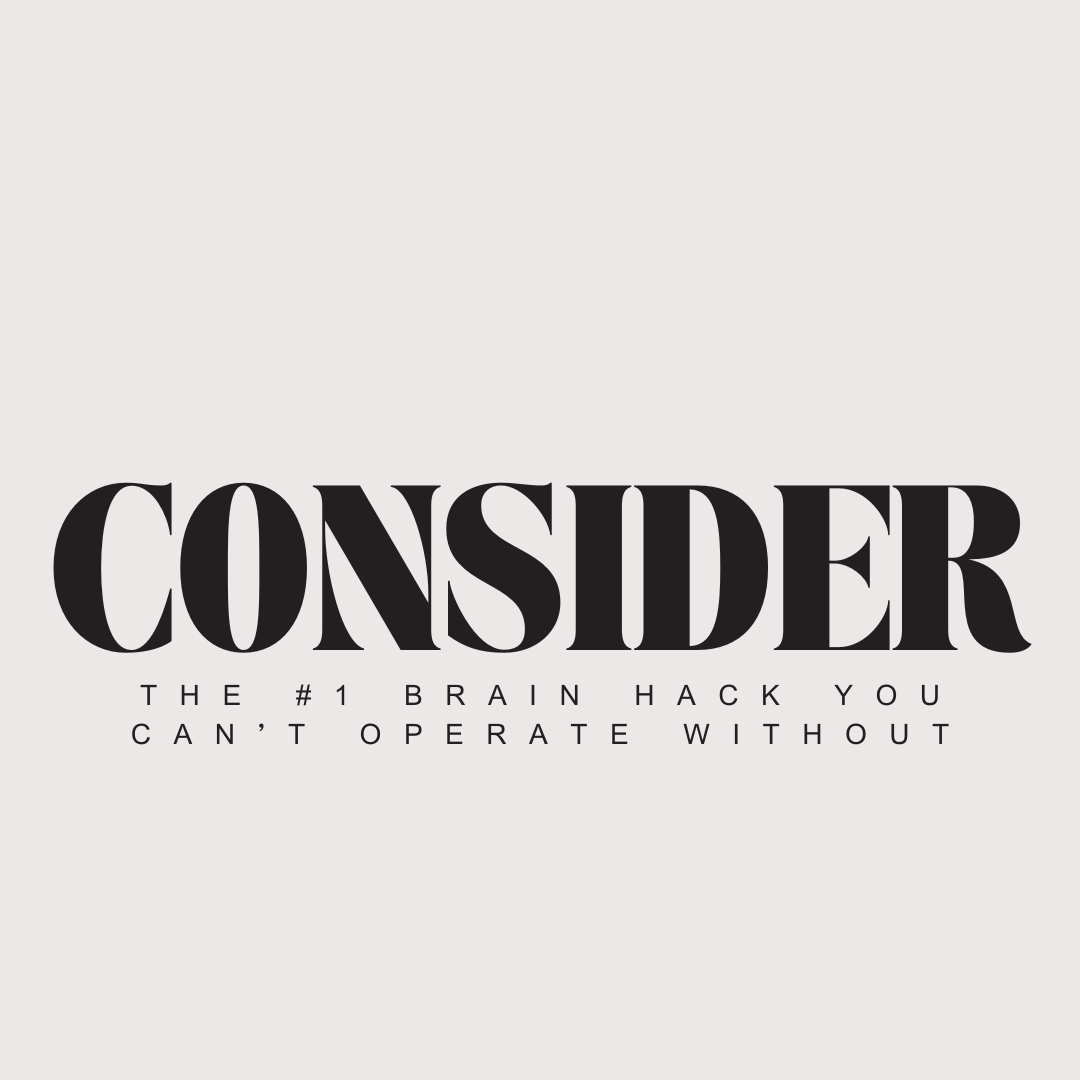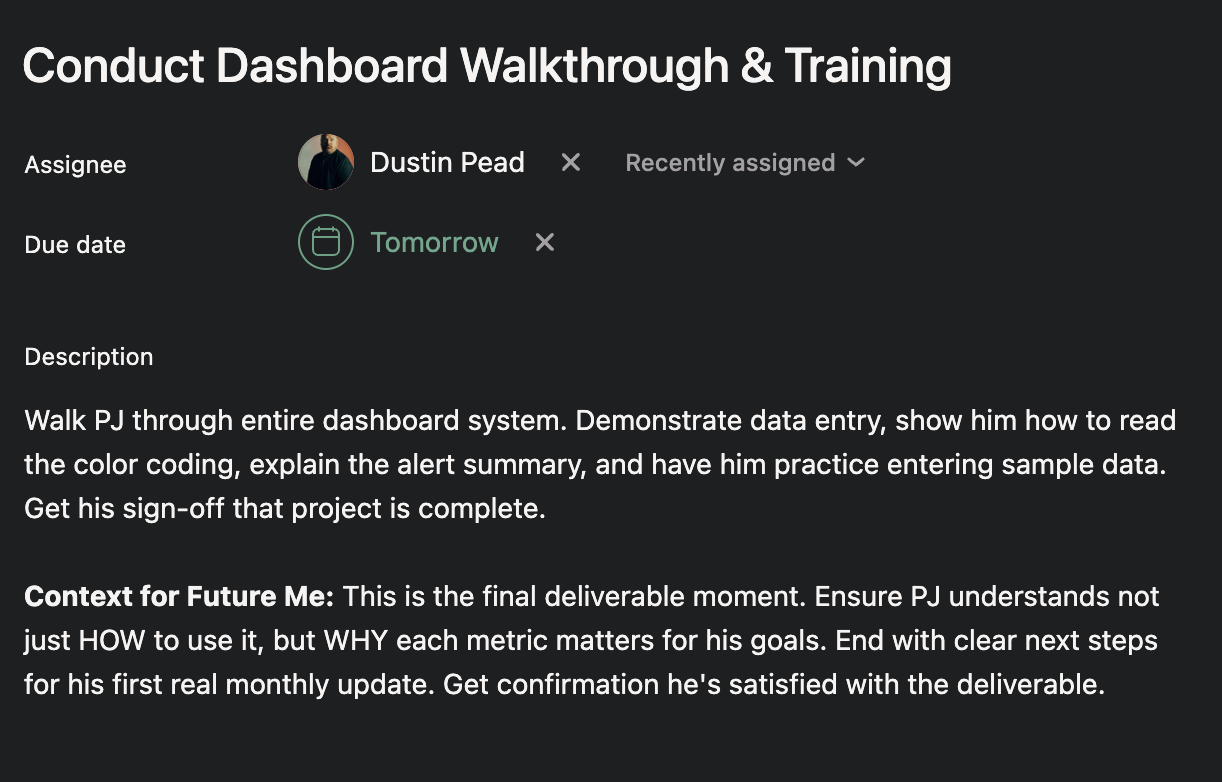Consider: The #1 Brain Hack You Can’t Operate Without
Picture this: You're deep in a creative project, totally in the zone, when suddenly your phone rings. It's an urgent client call that derails your entire afternoon. When you finally return to your work the next morning, you stare at your screen like you're looking at hieroglyphics.
What was I working on? Where was I headed with this? What decisions had I already made?
Sound familiar? You're not alone. This scenario plays out thousands of times every day in creative businesses around the world, and it's costing us more than just time—it's stealing our creative momentum and mental energy.
Here's the truth most creative professionals don't realize: Future You is forgetful. Not because you lack intelligence or focus, but because your brain is designed to optimize for the present moment, not to maintain perfect recall of complex project details across days or weeks.
Research shows it takes an average of 23 minutes to fully refocus after an interruption. But that's just the tip of the iceberg. The real cost comes from the mental energy spent trying to reconstruct context—energy that could be channeled into actual creative work.
Over the years, I've seen this pattern destroy productivity in even the most talented teams. The solution isn't superhuman memory or fewer interruptions (though we'd all love that). The solution is treating Future You like a completely different person who needs clear, comprehensive instructions.
The Future You Framework: Your Creative Superpower
The Future You Framework is built on one simple principle: assume no context retention between work sessions. This means documenting not just what you're doing, but why you're doing it, what you've already decided, and exactly where you were headed.
Think of it as leaving breadcrumbs for Future You to follow, except these breadcrumbs include a detailed map, compass, and GPS coordinates.
Here's how to implement it:
Start Every Task with Context: Instead of writing "Review client proposal," try: "Review Acme Corp proposal for Q4 campaign. Focus on budget section (pages 3-4) where client questioned our social media allocation. Need to provide 3 alternative budget structures by Friday. Already confirmed timeline works with their launch date."
Document Decisions in Real-Time: When you make a project decision, capture both the decision AND the reasoning. Future You needs to understand not just what was decided, but why—especially when that decision gets questioned later. AI notetakers like Fathom.ai are great for this.
Create Handoff Protocols: Whether you're handing work to a team member or just to tomorrow's version of yourself, include everything needed for seamless continuation: current status, next steps, relevant background, and any obstacles encountered.
How I Use This Method Every Day In Less Than 5 Minutes
If you are like me, you are in a lot of meetings. And if you’re smart, you are only in meetings that are necessary for you and your time. So, every meeting I’m in, I have some sort of audio recorder or AI notetakes running the whole time. This is not an effort to catch someone in the act of a lie or misinformation. I do this just for me and my team. So here’s what I do with the recording:
I take the transcript of the recording and drop it into Claude (my AI preferred tool of choice). PRO TIP: Make sure the project in which you begin this chat in has all the context of you, what you do, and why you do it. For Claude, project knowledge (context) is vital.
I ask Claude to “Pull action items out of this transcript that my team and I are responsible for. Include DO dates and DUE dates, with assignees next to each task. In the description of each task, give me a short explanation of the task and the context for future me to pick up without wasting time searching for the context.”
I then take the tasks it gives me and copy them into ASANA (yes, I know Claude has ASANA integration, but it’s still pretty buggy at the time of me writing this). I add the DO dates, the assignees, and the description and future me notes in the description of the task.
Then I walk away and forget all about it until the time comes for me to DO what I said I would do.
Example of how I use the Future Me Methodology
The Bottom Line
Future You isn't a productivity hack—it's a fundamental shift in how you think about creative work. It's recognizing that your most valuable creative asset isn't your current inspiration; it's your ability to maintain momentum across time.
Stop leaving Future You to figure it out. Start treating context as the creative currency it really is. Because the best creative professionals aren't just brilliant in the moment—they're brilliant at setting up their future selves for continued brilliance.
Ready to eliminate context chaos from your creative process? The Future You Framework is one of several proprietary methodologies we use to help creative professionals and agencies build sustainable, scalable systems. Learn more about our approach or schedule a discovery call to see how we can help you work smarter, not harder.

